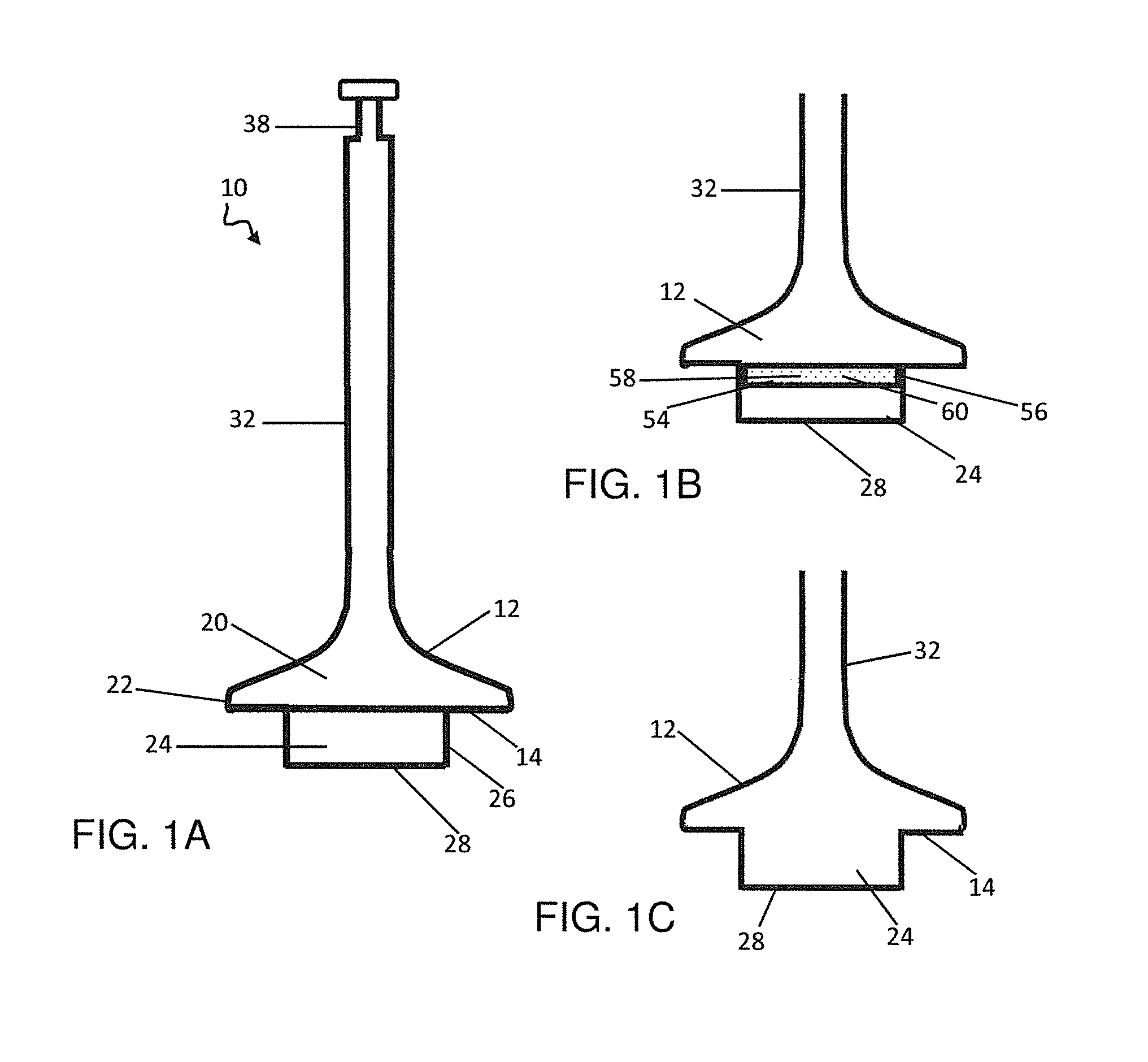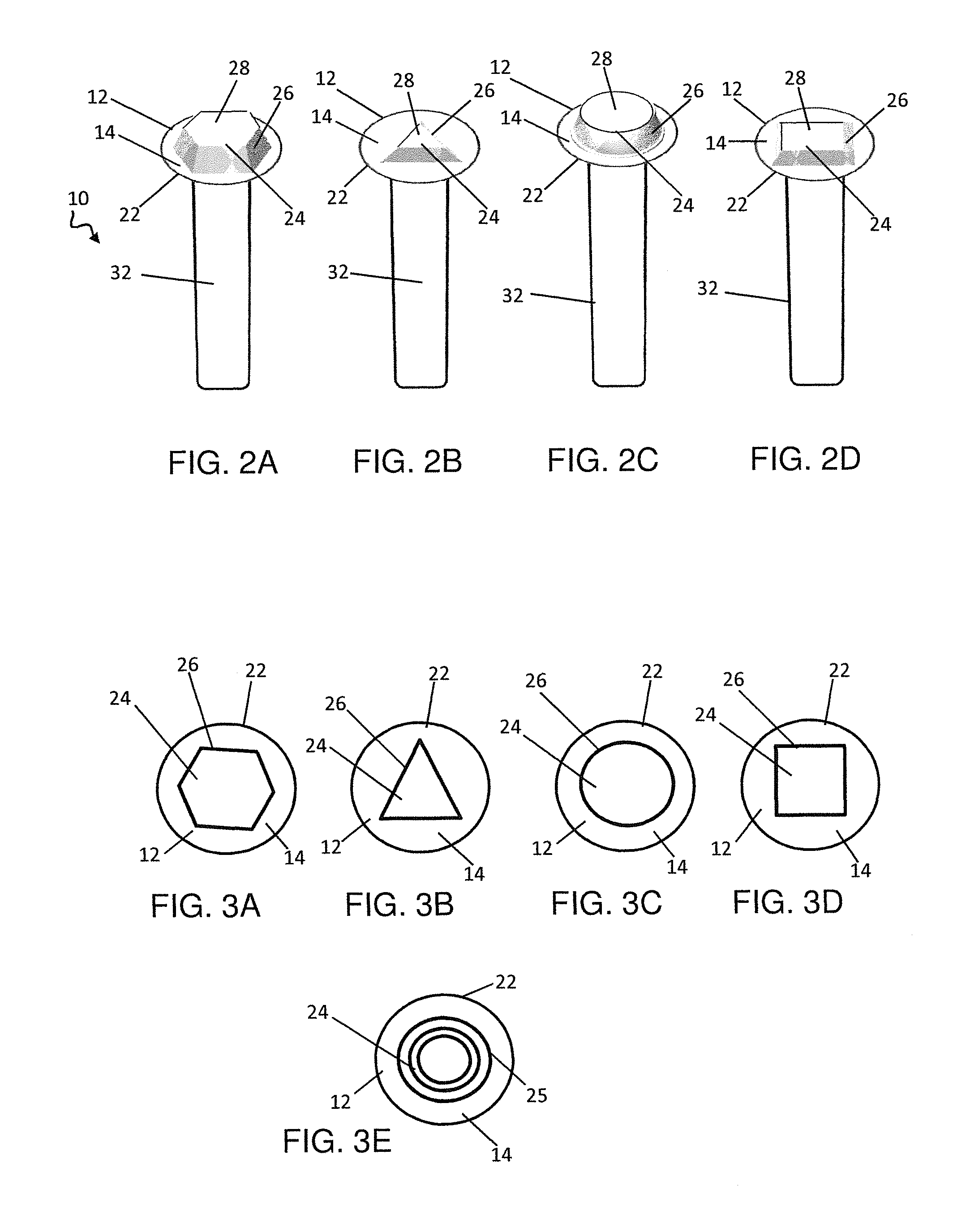Heat transferring engine valve for fuel conservation
a technology of fuel conservation and engine valve, which is applied in the direction of engine starters, machines/engines, muscle operated starters, etc., can solve the problems of specialized cylinders, devices that require mechanically complex regenerators or heat exchangers, and most internal combustion engines operate at far less than maximal efficiency, so as to increase the efficiency of combustion in internal combustion engines
- Summary
- Abstract
- Description
- Claims
- Application Information
AI Technical Summary
Benefits of technology
Problems solved by technology
Method used
Image
Examples
Embodiment Construction
[0025]A heat transferring gas exchange valve according to the present invention, generally shown at 10, includes a generally ovoid or circular valve head 12 including a lower combustion surface 14 directed toward the combustion chamber 16 of a cylinder 18, an opposite upper surface 20, a circumferential margin 22, and a heat transferring member 24 situated at the combustion surface 14 and extending toward the combustion chamber 16. The heat transferring member 24 includes at least one lateral side 26 and a face 28 directed toward the combustion chamber 16.
[0026]In the following description, the term “conventional valve” refers to any engine gas exchange valve that does not include a heat transferring member 26.
[0027]A exemplary heat transferring valve 10, as shown in FIGS. 1A and 6, is preferably a poppet valve reciprocatingly receivable within a valve guide 30 of a cylinder 18. The heat transferring valve 10 also includes support and mounting structures well known in engine valve a...
PUM
| Property | Measurement | Unit |
|---|---|---|
| power | aaaaa | aaaaa |
| heat insulating | aaaaa | aaaaa |
| shape | aaaaa | aaaaa |
Abstract
Description
Claims
Application Information
 Login to View More
Login to View More - R&D
- Intellectual Property
- Life Sciences
- Materials
- Tech Scout
- Unparalleled Data Quality
- Higher Quality Content
- 60% Fewer Hallucinations
Browse by: Latest US Patents, China's latest patents, Technical Efficacy Thesaurus, Application Domain, Technology Topic, Popular Technical Reports.
© 2025 PatSnap. All rights reserved.Legal|Privacy policy|Modern Slavery Act Transparency Statement|Sitemap|About US| Contact US: help@patsnap.com



